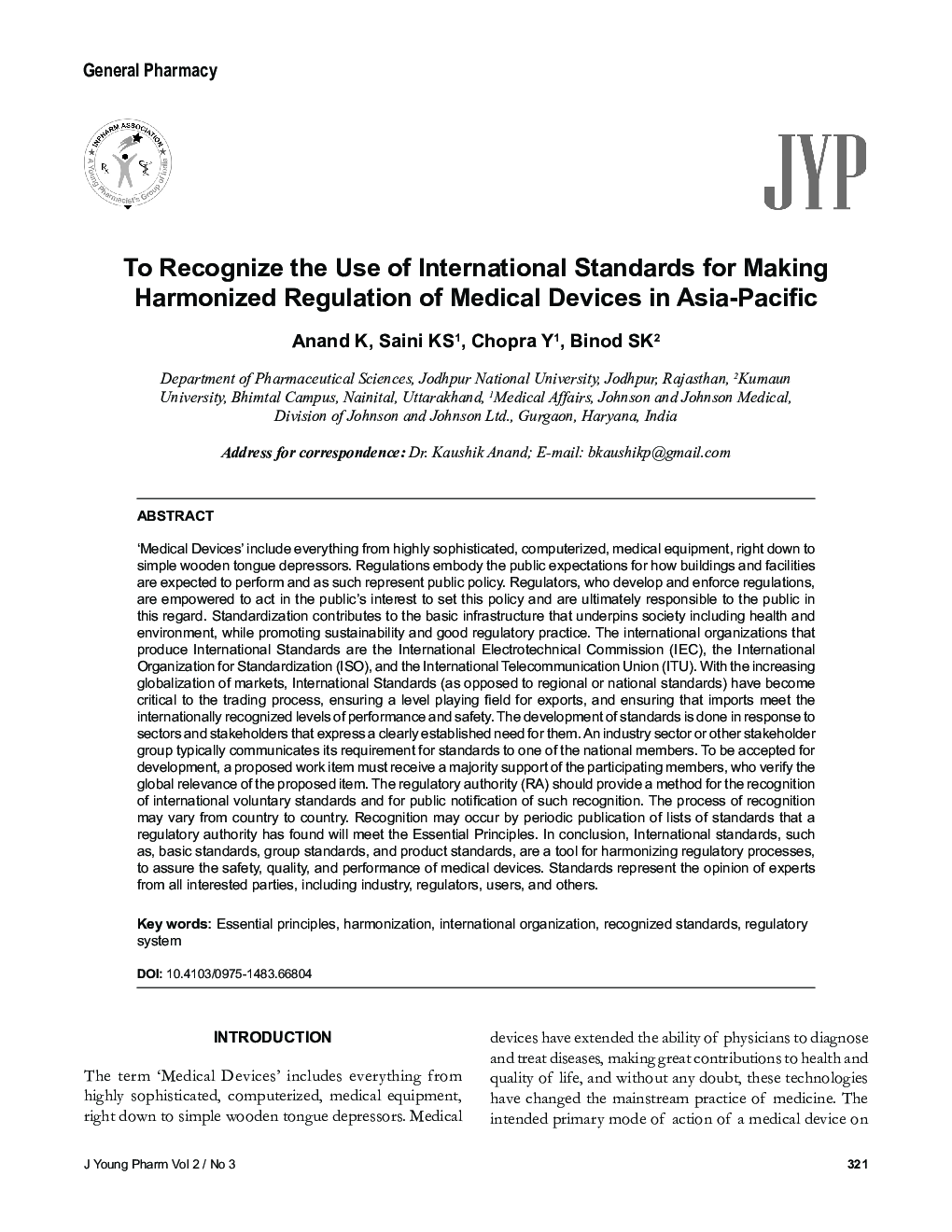| Article ID | Journal | Published Year | Pages | File Type |
|---|---|---|---|---|
| 2488842 | Journal of Young Pharmacists | 2010 | 5 Pages |
Abstract
'Medical Devices' include everything from highly sophisticated, computerized, medical equipment, right down to simple wooden tongue depressors. Regulations embody the public expectations for how buildings and facilities are expected to perform and as such represent public policy. Regulators, who develop and enforce regulations, are empowered to act in the public's interest to set this policy and are ultimately responsible to the public in this regard. Standardization contributes to the basic infrastructure that underpins society including health and environment, while promoting sustainability and good regulatory practice. The international organizations that produce International Standards are the International Electrotechnical Commission (IEC), the International Organization for Standardization (ISO), and the International Telecommunication Union (ITU). With the increasing globalization of markets, International Standards (as opposed to regional or national standards) have become critical to the trading process, ensuring a level playing field for exports, and ensuring that imports meet the internationally recognized levels of performance and safety. The development of standards is done in response to sectors and stakeholders that express a clearly established need for them. An industry sector or other stakeholder group typically communicates its requirement for standards to one of the national members. To be accepted for development, a proposed work item must receive a majority support of the participating members, who verify the global relevance of the proposed item. The regulatory authority (RA) should provide a method for the recognition of international voluntary standards and for public notification of such recognition. The process of recognition may vary from country to country. Recognition may occur by periodic publication of lists of standards that a regulatory authority has found will meet the Essential Principles. In conclusion, International standards, such as, basic standards, group standards, and product standards, are a tool for harmonizing regulatory processes, to assure the safety, quality, and performance of medical devices. Standards represent the opinion of experts from all interested parties, including industry, regulators, users, and others.
Keywords
Related Topics
Health Sciences
Pharmacology, Toxicology and Pharmaceutical Science
Drug Discovery
Authors
K. Anand, K.S. Saini, Y. Chopra, S.K. Binod,
